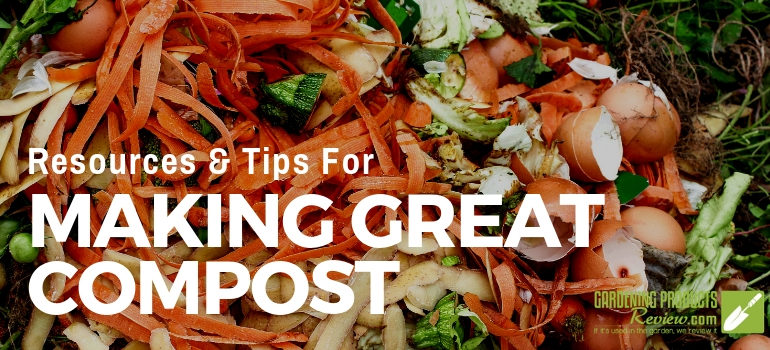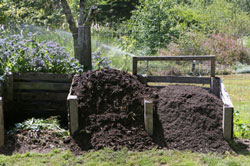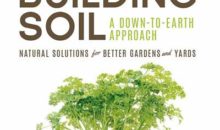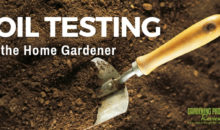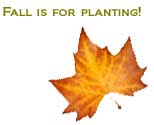Composting: Resources and Tips for Making Great Compost
We independently evaluate all recommended products and services. If you click on links we provide, we may receive compensation.
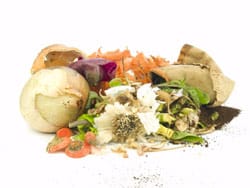 Did You Know?
Did You Know?
- Home composting can divert an average of 700 lbs. of material per household per year from the waste stream.
- Yard and food wastes make up approximately 30% of the waste stream in the United States.
- Composting most of these waste streams would reduce the amount of Municipal Solid Waste requiring disposal by almost one fourth.
- Compost used as a mulch, or mixed with the top one-inch layer of soil, can help prevent some plant diseases.
- Check on any local or state regulations for composting in urban areas–some communities may require rodent-proof bins.
- Compost can improve the soil structure of both heavy soils (allowing water to infiltrate and reducing runoff/erosion) and light soils (by improving its capacity to hold moisture and reducing water loss and nutrient leaching).
Before You Buy Commercial Compost …
Much of the compost sold in bags at big box stores, and even some from local nurseries, is not organic and can include residue from weed killers, pesticides, manure from animals dosed with antibiotics, oil, gasoline, and more. This is also true of most compost provided by local municipalities, particularly compost made from leaves or yard waste collected from the curb.
If organic compost is important to you, the only way to ensure that it is truly organic is to make your own using the five tips below or buy bagged compost that is OMRI Listed (look for the logo on the bag). You may also find a local provider but check very carefully into what exactly they put (and don’t put) into their compost mix.
Tip #1. Feed it Well: Use the Right Ingredients
Compost needs the right mixture of brown materials (high in carbon) and green materials (high in nitrogen) in order to break down quickly. Add too much brown material, and it will take forever to decompose. Add too much green material, and you’ll end up with a slimy pile that smells awful.
The optimal mixture of ingredients is about 30 parts carbon (“browns”) to 1 part nitrogen (“greens”). But how do you know what that means? Each type of ingredient has an approximate carbon to nitrogen ratio (see below for details). By mixing different combinations of materials, you’ll be able to get close to that magic 30:1 ratio. As a general rule of thumb, if you mix roughly equal amounts of dried leaves with a combination of kitchen scraps and grass clippings or other leafy greens, you’ll get pretty close.
| Raw Material | Ratio |
| Fresh manure | 7:1 (poultry), 16:1 (sheep), 22:1 (horse), 18:1 (cow) |
| Kitchen scraps | 12:1 |
| Seaweed | 19:1 |
| Coffee grounds | 20:1 |
| Grass clippings | 20-30:1 |
| Plants/Plant cuttings | 20-40:1 |
| Dried leaves | 50-80:1 |
| Hay (non-legume) | 30:1 |
| Straw | 80:1 |
| Paper & cardboard | 150-200:1 |
| Sawdust | 400:1 |
Tip #2. Turn it Often: Don’t Let it Sit
Turning your compost pile speeds decomposition by adding fresh oxygen to the mixture. In general, the more you turn the pile, the more quickly you’ll have finished compost. Turning every two weeks is ideal (but a lot of work…).
Many of the bacteria that break down your compost need oxygen to survive. After a couple of weeks, available oxygen in the pile gets used up and the micro-organisms die off, slowing or stopping the composting process. By turning the pile, you’re “feeding” the bacteria so they can get back to work breaking down your compost.
When turning your compost pile, move the drier material from the outer edges of the pile into the center and break up any clumps to get as much air into the mixture as you can. Moisten any of the materials as you go if they seem dry.
Tip #3. Keep it Moist – But Not Wet
Compost needs moisture in order to decompose efficiently; about 50-60% moisture content is ideal. The trick is in getting that right…
Although there are technical and time-consuming ways to measure moisture content, a simple “squeeze test” will tell you what you need to know. Simply take a handful of compost from the center of your pile and squeeze it in your hand:
- If you can squeeze water out of it, the compost is too wet
- If no water comes out and the compost crumbles apart when released, it’s too dry
- If no water comes out and the compost holds together when released, it’s just right
Tip #4. Kick-Start the Decomposition Process: Shred Ingredients
By shredding compost ingredients, you’ll speed up the decomposition process. Shredding increases the surface area that’s exposed to microbes that break down the compost, giving them more “food” to decompose. It also provides a more even distribution of air and moisture among the materials.
All ingredients can be shredded but the softer and more succulent the material, the less benefit there is to shredding; these materials will break down quickly on their own. Brown materials take the longest to decompose; shredding them significantly reduces the finishing time of compost.
Tip #5. Build Multiple Compost Piles
While this isn’t always feasible, two piles are generally better than one, and three are even better.
Once the composting process begins, it’s best to let it continue without adding fresh material (unless the ingredients are out of balance; if so, go ahead and fix it). Adding new material to a pile that’s already decomposing will only prolong the process, in effect “resetting the clock” to day one. To create a great batch of fully composted material, the mix needs to “cook” for at least several weeks; if you add additional material, you’ll have a nasty mix of fully decomposed material, partially decomposed material, and fresh materials (this is a common problem with tumbler type composters if you keep adding material). By using multiple piles, your compost will break down more efficiently and will be ready for use sooner.
A quick, easy, and affordable solution is to use the Compost Sak from Smart Pots as a second or third compost “bin”. Here’s our review.
Extra Tip – Not Too Big, Not Too Small: Build it Just the Right Size
A compost pile that’s too big will take forever to fill; you’ll be waiting for finished compost for a long time. A pile that’s too small won’t heat up enough; again, you’ll be waiting a while to get usable compost. The minimum size that allows a compost pile to heat up to the recommended temperature of around 140F is one cubic yard (3’ x 3’ x 3’). A 4’ x 4’ x 4’ pile is even better.
Composting Resources
Online Resources
US Composting Council website
Composting Fact Sheets from Cornell Waste Management Institute
Composting Fundamentals from VegWeb
Backyard Composting Tip Sheet from the Natural Resources Conservation Service
Composting Tips and Articles from HowToCompost.org
Books
BACKYARD COMPOSTING – published by Harmonious Press, Ojai, California, 1992 (ISBN 0-9629768-0-6). This is the simplest, most easy to read how-to guide for composting. It is short and very easy to read, yet presents all the basics.96 pp.
LET IT ROT! – by Stu Campbell, Storey Communications, Inc., Pownal, Vermont,1990 (ISBN 0-88266-635-5). This is a good general how-to guide for composting. It’s very easy to read, but includes considerable detail for those who want to learn more about the composting process. 152 pp.
WORMS EAT MY GARBAGE – by Mary Appelhof, Flower Press, Kalamazoo, Michigan, 1982 (ISBN 0-942256-03-4). Mary Appelhof is an expert with more than twenty years experience using worms to compost kitchen fruit and vegetable trimmings. Her book is the best source of detailed information on the simple art of “vermicomposting” kitchen wastes. Interesting reading, with cartoons, drawings, and diagrams. 100pp.

